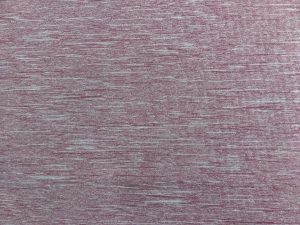Dappled
dap . pled /adjective/ marked with spots or rounded patches, variegated, covered with spots of color that are lighter or darker than the main color
If you have forgotten ever having heard the word dapple, then these lines from a well-known nursery rhyme might jog your memory: “I had a little pony/his name was Dapple Gray/ I lent him to a lady/to ride a mile away.” Little Dapple Gray was so named because he was gray and covered with colored spots.
The word dappled appears in a poem titled “Pied Beauty,” by Gerard Manley Hopkins. There’s something about poets that makes them see things in a different light from the rest of us, and the beauty of it all is that they are able to express what they see in ways that stir our own imagination. Imagine someone getting so excited about the vast array of differences in nature that he shouts, “Glory be to God for dappled things!” That was Hopkins’ reaction as he looked at the world around him, and he went on to catalogue the disparate dappled things that be observed: skies of couple-color as a brinded cow, rose moles on trout that swim, finches’ wings, and much more–each of them with uneven, multiple colors. All of this difference “He Fathers forth.”
“Pied Beauty” is one of the most analyzed pieces of poetry not only because it draws our attention to the amazing variety in nature, but also because it impels us to extend this grand dappleness to other facets of life– to our communities and to our personal encounters. We live in a diverse, multifaceted world, each part bringing a vital piece to the pattern. Its beauty exists in contrary types, as the poet declares: “all things counter, original, spare, strange.” When we extend the images in a broader application to people, we can see that everyone exists as a part of the broad social fabric. Those individuals we consider “irregular” or even “strange” fit somewhere; they are part of the beautiful mosaic of life. When we allow not only our eyes but also our spirit to view them in their true light, we want to shout with the poet, “Glory be to God for all these different kinds of beautiful people!”
Despite what we hear so often in public discourse today, the people who are transplanted from all over the world to this country bring a delightful dappleness to this nation, a panorama of inclusiveness. One college where I had the privilege of working took pride in the fact that on the campus there were about forty nations represented in the student body–the Seychelles, Ghana, Cuba–giving the students the opportunity to appreciate their oneness in diversity. They learned from one another about foods, dress, family patterns, even customs relating to death and dying. The mingling broadened everyone.
Likewise, in a church congregation there is dappleness, even though some of the very members may not see it this way. But it is a milieu in which people from different backgrounds, with their varied ways of seeing and doing things, come together to form a purposeful unit. They differ in their zeal, tastes, abilities, physical makeup, just like a body that is a composite of all its parts. Actually, that is the way the Apostle Paul sees the church –like a body with its diverse parts working together harmoniously for the purpose of Kingdom building. The philosopher Friederich Nietzche is said to have observed that every human being “is a marvelously picturesque part of diversity in unity.” O the amazing possibislities of getting all the “picturesque” parts of a church body to come together in unity.
In he title of Hopkins’ poem, the word pied suggests a mixture, a blending, two or more colors coming together. The poem celebrates the imperfect parts of nature in a world obsessed with perfection. So many people are made to feel that they don’t fit, perhaps because of their facial features, their skin color, their body type–too thin, too fat, too tall too short. We tend to concentrate on differences–too old, too young, too poor, too rich–but when we are willing to accept the concept of pied beauty, everyone fits in the pattern; all come together in a diverse wholeness. We need to embrace differences instead of seeing them as barriers. All our differences–religious, political, social–are part of the dappleness of our country. Each one whether “counter,” “original” or “strange” is an integral part of the whole.
If we learn to look around with eyes like Hopkins’–eyes of awareness, eyes of acceptance, inclusiveness and enthusiasm– we’ll see that the Creator has made the world wonderfully dappled. Let us rejoice in the beauty of it all.
Blessings,
Judith
********
“Come out into the light of things;
Let Nature be your teacher.”
William Wordsworth

2 Comments
Fartema Mae Fagin
Great Blog! I researched the poem, ‘Pied Beauty’, by Gerald Manley Hopkins. You are so on point! This poem celebrates the imperfect parts of nature in a world obsessed with perfection. My pastor is teaching a series titled ‘Beyond Perfection’ which focuses on ‘relationships over rituals.’ (Matthew 5)
Thank you for such a thought provoking lesson. There is a sermon in this message you give your readers.
Judith Nembhard
Fartema,
Gerard Manley Hopkins is one of my favorite poets. His perceptions about nature as revelations about God never cease to enlighten me. I would recommend his poem “God’s Grandeur.” I think you’ll like it. Thanks for the kind comment. JN